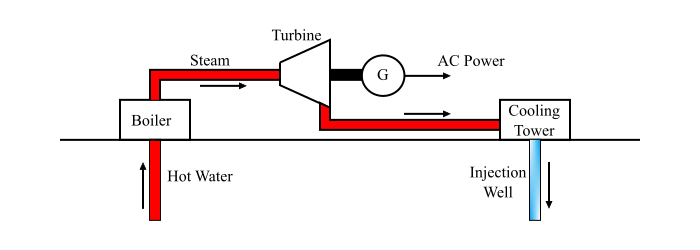
 Data Structure
Data Structure Networking
Networking RDBMS
RDBMS Operating System
Operating System Java
Java MS Excel
MS Excel iOS
iOS HTML
HTML CSS
CSS Android
Android Python
Python C Programming
C Programming C++
C++ C#
C# MongoDB
MongoDB MySQL
MySQL Javascript
Javascript PHP
PHP
- Selected Reading
- UPSC IAS Exams Notes
- Developer's Best Practices
- Questions and Answers
- Effective Resume Writing
- HR Interview Questions
- Computer Glossary
- Who is Who
Alternative Ways of Generating Electricity
Apart from the conventional methods of generating electricity (like thermal, hydroelectric, gas turbine, nuclear power etc.), there are also some alternative methods of generating electricity, which are as follows −
Solar Power
The electricity can be generated from the heat of the sun. In the solar power system, the energy of sunlight is converted into electricity, either directly by the photovoltaic cell or indirectly by using concentrated solar power or combination of both.
In solar power generation, the sunlight strikes onto the PV cells, which converts the energy of sunlight into direct current, that can either be stored into batteries or converted into alternating current with the help of inverters for the utilisation. The schematic shows a typical solar power system.

Wind Energy
In the wind energy or wind power plant the kinetic energy of wind is converted into electricity. In the wind power systems, the wind is used to provide mechanical power through wind turbines to run electric generators to generate electric power.
Wind power is a renewable energy source that has less impact on environment. The wind farms consist of many individual wind turbines, which are connected to electric power grids. A typical wind power plant is shown in the figure.

Geothermal Power
The word geo (Earth) and thermal (heat) i.e. it is the heat energy generated from the earth. In a geothermal power plant, the heat is obtained from the hot water that exist at varying temperature and depth below the earth’s surface.
In this method of generation of electricity, the deep wells are drilled into the earth to tap steam and very hot water that can be brought to the surface for the generation of electricity. The geothermal power is an alternative way of generating electricity, which is a clean and renewable source of energy.

Biomass and Biofuel Energy
The biomass and biofuel are renewable sources energy. In this method electricity generation, the biomass and biofuels are used as the sources of energy that is to be converted into electricity. The biomass is a plant or animal residue, which is used as a fuel to generated heat or electricity.
Examples of biomass are wood, waste from the farms or forest and energy crops etc. The biofuels are liquid or gaseous fuels, used for transportation. A typical biomass power plant for the generation of electricity is shown in the figure.

Tidal Energy
The tidal energy is a renewable source of energy. In this method of power generation, the kinetic energy of tides is converted into electricity by turning a turbine that in turn connected with a generator. The tidal energy is produced due to gravitational pull form both the moon and the sun that pulls sea water upwards, while the earth’s gravitational force pulls water down, this creates high and low tides. The setup for the generating electricity from the tidal energy is shown in the figure.

Hydrogen Gas
Hydrogen gas is clean fuel i.e. it is a zero carbon fuel burned with oxygen. The hydrogen gas can be used in fuel cells or internal combustion engines as fuel to generated electricity. The gas provides an alternative way of generating electricity.
Fuel Cells – Fuel cells are used to convert the energy of hydrogen directly into the electricity. The arrangement for this conversion is shown in the figure.

Internal Combustion Engines – The hydrogen gas can also be used as a fuel to drive an IC engine, which in turn runs a generator to generate electricity (see the figure).


